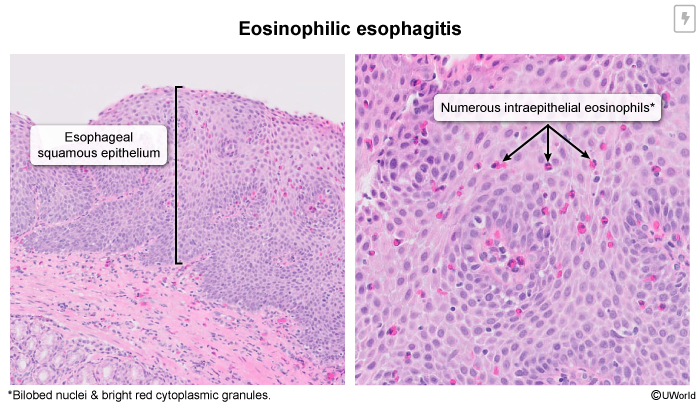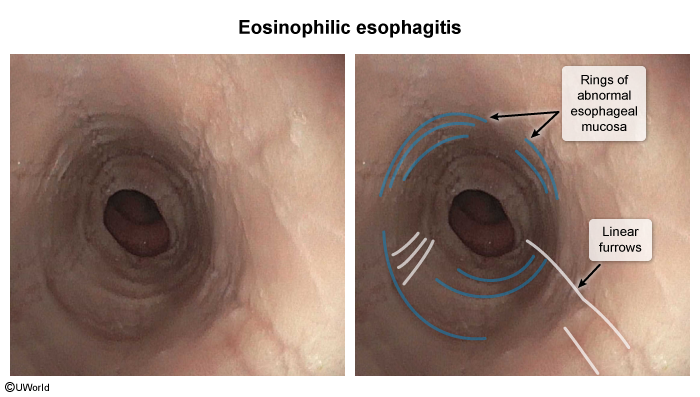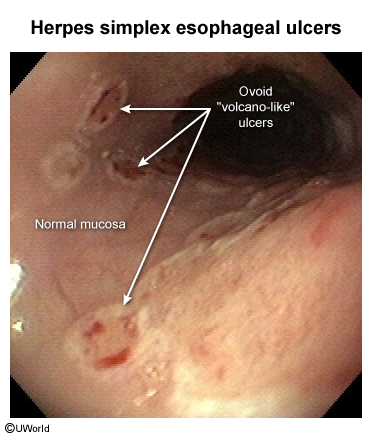Eosinophilic Esophagitis
Article Sections
Introduction
Eosinophilic esophagitis (EoE) is a chronic, immune-mediated esophageal disease characterized by eosinophilic infiltration of the esophageal epithelium. It presents with symptoms related to esophageal dysfunction, such as dysphagia and food impaction. The prevalence of EoE has been increasing over the past few decades, paralleling the rise in other allergic diseases.
Pathophysiology
EoE is an immune-mediated inflammatory response to specific food and environmental antigens. On exposure, these antigens activate T-helper 2 lymphocytes, leading to the release of cytokines such as IL-5 and IL-13. These cytokines promote eosinophil proliferation and recruitment to the esophagus. Eosinophils release toxic granules that cause tissue damage, leading to the clinical manifestations of EoE.
Risk factors
- Genetic predisposition: A family history of EoE or other atopic conditions increases the likelihood of developing the disease.
Continue Learning with UWorld
Get the full Eosinophilic Esophagitis article plus rich visuals, real-world cases, and in-depth insights from medical experts, all available through the UWorld Medical Library.
Images


